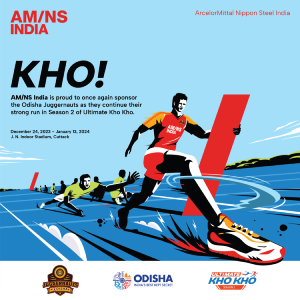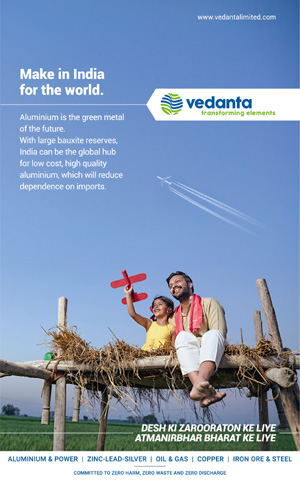WELL COME BABA GANESH
By Er Taraprasad Mishra
Jajpur, Sept 8 : Ganesh Chaturthi is one of the most prominent festivals of India. People of India wait the whole year for this festival eagerly. Although it is celebrated all over the country, in the state of Maharashtra it is celebrated with the most enthusiasm. Ganesh Chaturthi is a Hindu festival which holds utmost importance in the religion.
This festival is celebrated following the Hindu Mythology which says that Ganesh Chaturthi is the birthday of the Lord Ganesha. Hindus refer to Lord Ganesha as the remover of all obstacles. People believe that Lord Ganesha comes every year with prosperity and success.
Furthermore, they welcome Lord Ganesha in their homes with this festival with the belief that he will remove all their sufferings. Ganesh Chaturthi sparks joy all over the country and unties people with celebrations.
Ganesh Chaturthi is celebrated for a whole 11 days. It begins on the Chaturthi when people install the statue of Lord Ganesha in their homes and temples. This festival ends on Anant Chaturdashi with Ganesh Visarjan. The devotees of the Lord Ganesha offer their prayers to God. They sing devotional songs for him and recited various mantras in his praise.
They perform aartis in favour of the lord and seek his blessings on them. Most importantly, they offer Lord Ganesha sweets. Ganesha Chaturthi especially calls for Modak. Devotees offer Lord Ganesha with Modak, which is the lord’s favorite dessert. Modaks are sweet dumplings which people make with a filling of coconut and jaggery.
They either fry them or steam them. People at homes and sweet shops make this sweet delicacy. They are seen around Ganesha Chaturthi mostly and are a huge hit amongst children. Ganesha Chaturthi is the festival celebrating the rebirth God Ganesha.
The elephant-headed God has an interesting story. He was created in a completely human form by the Goddess Parvati. She moulded him from clay or the earth from her own body (versions vary) and gave it life. She then tasked him to stand by the door of her palace as she bathed and not let anyone in.
When her own husband, the great God Shiva tried to enter the human form barred his path. Shiva was furious at being denied entry into his own home and an awesome battle followed. Shiva won the battle and beheading Ganesha. But he immediately felt guilty and he knew his wife would be furious. So he sent his men to bring back the head of the first creature they came across.
They met an elephant with one tusk who happily sacrificed his head for the honour. Shiva bought Ganesha back to life and thus his story is considered one of rebirth and regeneration. Ganesha was made the head of Shiva’s followers, the Ganas, hence his name, Ganpati. He is worshiped as a bringer of luck and prosperity. He was also the God to help the Devs and humans in the preservation of balance by bringing obstacles to block the progression of evil and removing obstacles from the paths of goodness.
This 11-day long festival begins with people getting up in the morning and bathing. They buy new clothes for this festival and wear these clean clothes in the morning after bathing. They follow the traditional rituals of chanting mantras and songs. When Ganesh Chaturthi ends, they pray for the return of Lord Ganesha every year.
They look forward to this festival every year. The final immersion of Lord Ganesha’s statue in the river or ocean marks the end of Ganesh Chaturthi. Ganesh Chaturthi, also called Vinayaka Chavithi, is an auspicious Hindu festival which is celebrated for 10 days every year.
The festival is celebrated in the Bhadra month as per the Hindu calendar which generally falls in mid-August to September.
It marks the birthday of the beloved elephant-headed Lord Ganesha. Ganesha is known as the God of wealth, sciences, knowledge, wisdom and prosperity, and that’s why most Hindus remember him and seek his blessings before starting any important work. Lord Ganesh is known by 108 different names like Gajanana, Vinayaka, Vighnaharta among others. Ganesha is the younger son of Lord Shiva and Parvati.
There are various stories behind his birth but two of them are the most common ones. Lord Ganesha was created by Parvati out of dirt from her body to guard her in the absence of Shiva. She gave him the task of guarding her bathroom door while she took a bath.
In the meantime, Shiva returned home and Ganesha, who didn’t know who Shiva was, stopped him. This angered Shiva and he severed Ganesha’s head after a tiff between the two. Parvati was enraged when she came to know about this; Lord Shiva, in turn, promised to get Ganesha back to life. The devas were sent to search for a child’s head facing north but they could only find an elephant’s head. Shiva fixed the elephant’s head on the child’s body, and that how Ganesha was born.
The other popular story is that the Devas requested Shiva and Parvati to create Ganesha so that he can be a Vighnakarta (creator of obstacles) for rakshasas (demons), thus being a Vighnaharta (averter of obstacles) and helping Devas.
It is believed that devotees who pray to Ganesha are able to fulfil their wishes and desires. So, the main essence of Ganesh Chaturthi is that devotees who pray to him are set free of sins and it leads them on the path of knowledge and wisdom. Historically, the festival has been celebrated since the time of King Shivaji.
It was during India’s freedom struggle that Lokmanya Tilak changed Ganesh Chaturthi from a private celebration to a grand public festival where people from all castes of the society can come together, pray and be united. Over the years with growing environmental awareness, people have started celebrating Ganesh Chaturthi in an environmentally friendly way.
This includes– getting Ganesha idols made of natural clay/ mitti and using only flowers and natural items for decorating the pandals. There are four main rituals which are performed during the 10-day long festival. They are namely; Pranapratishhtha, Shhodashopachara, Uttarpuja, and Ganpati Visarjan.
The excitement of Ganesh Chaturthi settles in weeks before the festival actually begins. Artisans start preparing clay idols of Ganesha in different poses and sizes. The Ganesha idols are installed in beautifully decorated ‘pandal’ at homes, temples or localities. The statue is also decorated with flowers, garlands and lights. A ritual called Pranapratishhtha is observed where a priest chants mantra to invoke life in the diety.
Prayers are then offered to Ganesha’s idol in 16 different ways. This ritual is called Shhodashopachara. People celebrate by singing or playing religious songs, dancing to drum beats and by lighting up fireworks– all of which add to the festive mood. The Uttarpuja ritual is then performed which is about bidding farewell to Ganesha with deep respect.
This is followed by Ganpati Visarjan, a ceremony wherein the statue is now immersed in water. While carrying the statue to the sea and while immersing it, people generally chant in the Marathi language ‘Ganapati Bappa Morya, Purchya Varshi Laukariya’ which means ‘Goodbye Lord, please come back next year’.
While some devotees celebrate this festival at home, others pay their visit to Lord Ganesha at public pandals. People offer their due respect, prayers and offerings to Ganesha. Dishes like Lord Ganesha’s favourite Modak, Pooran Poli, and Karanji are prepared for friends, family and visitors.






